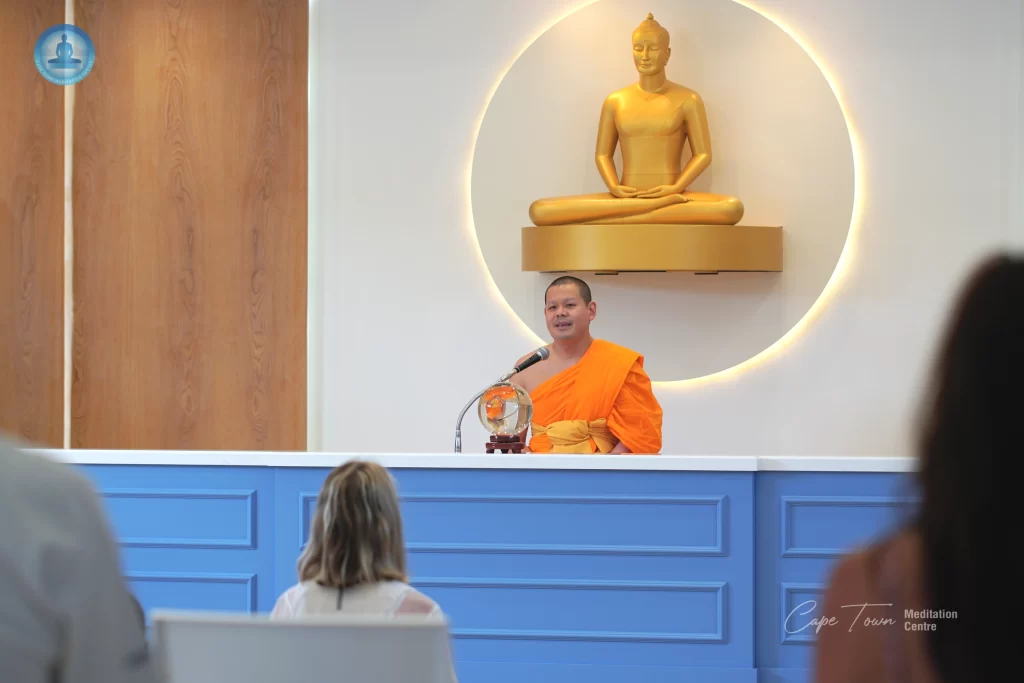The monk suggested that the practice in Buddhism is a gradual cultivation of drawing the mind from external factors into oneself and training from tangible external stimuli. This is done to familiarize and integrate the mind inwardly. Training in various aspects facilitates the ease of practicing meditation and reduces obstacles that may arise during meditation. External training is easier as it involves tangible elements, making it more accessible, while internal training is more challenging but encourages motivation and inner drive to manifest externally.

In terms of meditation practice, the monk emphasizes the 4C, which are consciousness, comfort, consistency, and consideration. These four foundations contribute to the progress of meditation.
Consciousness – Keeping the mind focused on the present moment and not allowing it to wander into irrelevant thoughts. The mind needs to be present with the body, and when the body and mind are united, working together, there is a profound sense of awareness.
Comfort – Preliminary comfort involves feeling neutral, neither happy nor sad. In this state of neutrality, we acknowledge and accept the comfort. As we embrace this comfort, it gradually increases, bit by bit.
Consistency – Training the mind to remain consistently present with ourselves throughout the day and night, whether engaged in work or personal tasks. Also, cultivating a regular meditation practice as part of our daily routine.
Consideration – Regularly examining whether our meditation practice aligns with the principles correctly. If not, it is essential to observe, make corrections, and continually strive for improvement. By being attentive and making adjustments, we can access genuine points of comfort and true happiness.

![]()

